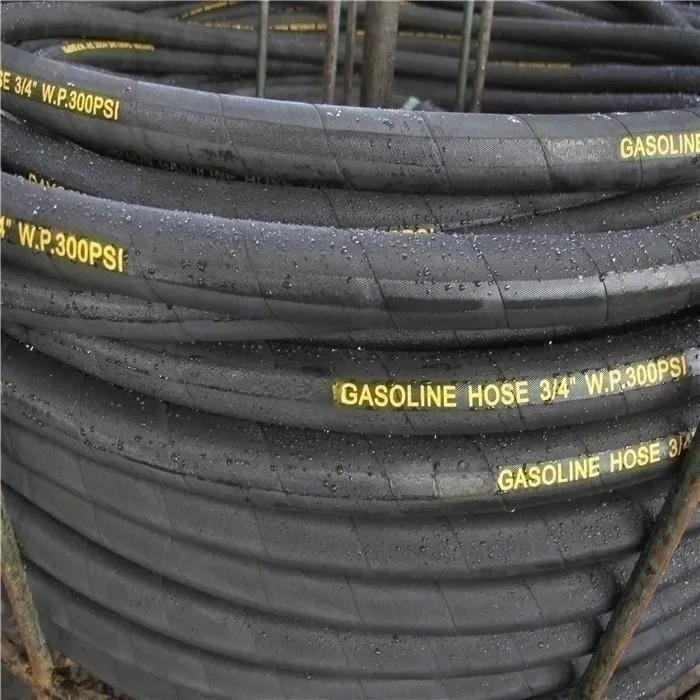335345435
des . 22, 2024 06:46 Back to list
four wire spiral hydraulic hose
Understanding Four-Wire Spiral Hydraulic Hoses
Hydraulic hoses are crucial components in various industrial applications, providing the necessary fluid transfer to facilitate machinery operations. Among the various types of hoses, the four-wire spiral hydraulic hose is often favored for its robust construction and high-pressure capabilities, making it suitable for demanding environments.
Structure and Design
The four-wire spiral hydraulic hose is designed to withstand high pressures typically ranging from 4,000 to 6,000 psi (pounds per square inch). Its construction involves multiple layers, with four steel wires spiraled around the rubber core and the outer layers of the hose. This spiral arrangement serves to enhance the hose’s ability to handle high pressure and prevents it from kinking during operation. The inner layer is typically made of high-quality rubber or thermoplastic, which provides resistance to hydraulic fluids and ensures longevity.
The four-wire design is particularly advantageous, as it offers increased flexibility while maintaining exceptional strength. The spiraling of the steel wires not only aids in the hose's flexibility but also improves its resistance to external damage caused by abrasion, impact, or environmental factors, making it an ideal choice for rugged applications such as mining, construction, and heavy equipment.
Applications
Due to their structurally sound design, four-wire spiral hydraulic hoses are commonly used in various industries. These hoses are integral to hydraulic systems in excavators, bulldozers, and other heavy machinery where high pressure and durability are paramount. They are also used in the oil and gas sector, where extreme conditions can damage lower-grade hoses. Additionally, these hoses are essential in agricultural machinery, ensuring that power transfer between hydraulic pumps and actuators operates smoothly and efficiently.
The ability to handle hydraulic fluids at high temperatures and pressures makes them indispensable in applications where safety and reliability are critical. Industries that rely on fluid power, such as manufacturing, automotive, and aerospace, have seen a significant increase in the use of four-wire spiral hoses to enhance operational efficiency.
four wire spiral hydraulic hose

Advantages
One of the primary advantages of four-wire spiral hydraulic hoses is their superior pressure capacity. The four-wire configuration allows these hoses to withstand significantly higher pressures than their two-wire counterparts. This feature reduces the risk of hose failure under demanding conditions, which can lead to costly downtime and safety hazards.
Additionally, the flexibility offered by these hoses enables easier installation and routing around machinery, reducing the need for complex fittings. This flexibility is also beneficial in tight spaces, where maneuverability is crucial. Furthermore, the durability of four-wire hoses translates into an extended service life, providing cost savings through decreased frequency of replacements.
Maintenance and Care
While four-wire spiral hydraulic hoses are designed to be durable, regular maintenance is essential to ensure their longevity. Operators should routinely check for signs of wear, such as abrasions or cracks, and ensure that the hose connections are secure to prevent leaks. Proper storage is also critical; hoses should be kept out of direct sunlight and extreme temperatures to prevent degradation of the rubber and steel components.
Conclusion
In summary, four-wire spiral hydraulic hoses represent a crucial advancement in hydraulic technology, combining strength, flexibility, and durability to meet the demands of various industrial applications. Their ability to withstand high pressures while providing reliable performance makes them a staple in sectors where hydraulic machinery plays a vital role. Understanding these hoses' design, applications, and proper maintenance can lead to more efficient and safer operations, benefitting industries reliant on hydraulic systems.
-
Premium Chemical Resistant Distribution PTFE Hose
NewsAug.01,2025
-
Industrial Distribution PTFE Hose - High Purity & Flexibility
NewsJul.31,2025
-
Durable Twin Hydraulic Hose for High-Pressure Systems
NewsJul.31,2025
-
Discount Hydraulic Hose Factories – Bulk Supply & Quality Assurance
NewsJul.30,2025
-
Hydraulic Hose Crimping Machine for Precise & Durable Connections
NewsJul.29,2025
-
High Pressure 4SH Hydraulic Hose for Heavy Duty Applications
NewsJul.29,2025



